Abraham, Father of Many Nations, page 2
Continued from Abraham, page 1
The creators (Elohim) outline in the second hour 'the
shape of a more corporeal form of man. They separate it into
two and prepare the sexes to become distinct from each other.
Such is the way the Elohim proceeded in reference to every
created thing."
- Eliphas Levi, The Nuctameron of the Hebrews
"...The androgynous constitution of the Elohim is disclosed
in the next verse, where he (referring to God) is said to have
created man in his own image, male and female; or, more properly,
as the division of the sexes had not yet taken place,
male-female....This definitive reference to a humanity existing
prior to the 'creation of man' described in Genesis must be
evident to the most casual reader of Scripture."
Manly P. Hall, Masonic, Hermetic, Quabbalistic & Rosicrucian
Symbolical Philosophy
Thus as we read on Atlantis, page 2, under Plato's account, the men and women were equal and they practiced in common virtue which belonged to them without distinction of sex. Anotherwords they were androgynous, male/female beings. The country had three classes of people, those that were artisans, those that were husbandmen, herding and caring for amimals and a warrier class that was set apart from the others by the devine law.
"Two hundred angels descended to the summit of Mount Hermon, which owes its name to this very occurrence, because they bound themselves there to fulfil their purpose, on the penalty of Herem, anathema. Under the leadership of twenty captains they defiled themselves with the daughters of men, unto whom they taught charms, conjuring formulas, how to cut roots, and the efficacy of plants. The issue from these mixed marriages was a race of giants, three thousand ells tall, who consumed the possessions of men. When all had vanished, and they could obtain nothing more from them, the giants turned against men and devoured many of them, and the remnant of men began to trespass against the birds, beasts, reptiles, and fishes, eating their flesh and drinking their blood".
Abraham left because he was told to by God...He left because the Gods that he followed had left! He followed them into Egypt.
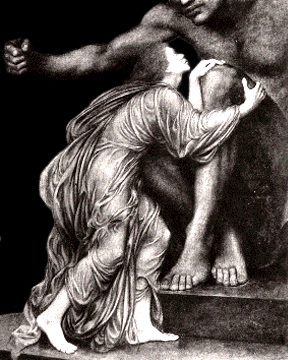 The (Nephilim)
were created by the race we know as the Anunnaki (gods). The Nephilim are the sons of
the Anunnaki by the daughters of 'men'. They are a 'giant race'.
Some of their remains are displayed on
The (Nephilim)
were created by the race we know as the Anunnaki (gods). The Nephilim are the sons of
the Anunnaki by the daughters of 'men'. They are a 'giant race'.
Some of their remains are displayed on Passage Forward 2. The Anunnaki under Enki left the old Sumerian city and vested their interests in Egypt where they, under the instructions of Enoch also known as Thoth, built the Great Pyramid. Here they preserved their records so that a future generation could find the wisdom and secrets they brought to man for his well-being.
This should explain how the rift between the 'religious' cultures began. Each one claiming, only THEY knew the true God. One calling the other 'devil worshipers'. As long as the ignorant, jealous god Enlil rules our world, this will continue. His side will yell the loudest, claim to be God's people, say Jesus, Mohammed, Buddah, ect., is the ONLY Son and condemn the real believers. The ignorant god as you can see, causes all the wars and senseless murders in the world..
There was a split in the populace of believers in the True God and those who believed in Jehovah/Enlil. We have a name for the 'true god'- Enki but we called him YHWH on the 'Passage pages'. But his true name is secret, only known to 'the son's of light'. The High Priesthood that Moses and Aaron brought to Israel was the only sect that believed in and knew the True God who we called YHWH, otherwise known as Adon. Pew sitters will call Adon the false god because they don't know any better.
This sect seperated themselves from the Jews that followed
Jehovah, who like Seth seperated his family from the families of
the followers of the Cain and after thousands of years they
became known finally as the Essenes. They were also called 'outcasts' because they and they
alone knew the true God. Adam, Seth, Enoch, Noah, Zend,
Imenhotep, Joseph, Tao, Moses, Ankhenaten, Joshua, Melchizedek,
Solomon, Plato, Pythagoras, ect. and Jesus knew the True God.
The false god believers out number the True God believers 8 to
one and that remains so today. But there are, according to Enoch,
70 Brotherhoods, having members who know the true God.
It is thought that the people who lived by the Nile and had invented ways to build an irrigation system from it, possessed knowledge and technology, far advanced from the population at large. Scholars feel that the builders of Sumer who knew God's secrets, including Abraham, traveled to Egypt and shared the knowledge with the priests of Egypt. But we see that Enki and Enoch were in Egypt and had already shared their secrets with men. But these men eventually seperated themselves from the invaders and moved back to the city of Thebes. On our 'Passage pages' we confirm how they all lived close to each other early in Abrahams time. They had intermarried and had become corrupt thus forming the 12th dynasty of Hyksos kings in the 'On' area which was the earthly home of Anu.
This is when the true Egyptians moved back to Thebes (Memphis) and formed the 12th Thebian dynasty. About 2200 BC, right at the end of the reign of Pepi II by Clayton or Lehner's chronology. It also looks like the Faiyum actually dried up as a result of this, so that all the sediments from the Old Kingdom blew away. see Second intermediate period
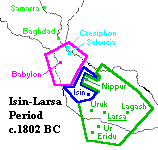 This page shows proof that Enlil was
in charge of the area Lipit-Enlil
1873 - 1869BC. You will also see the names of SIN, Ishtar, and ADAD who helped
train Enoch. Ur-Ninurta was Enlil's son and he is seen here in charge in 1923 - 1896 BC. (the Enûma
Anu Enlil)
This page shows proof that Enlil was
in charge of the area Lipit-Enlil
1873 - 1869BC. You will also see the names of SIN, Ishtar, and ADAD who helped
train Enoch. Ur-Ninurta was Enlil's son and he is seen here in charge in 1923 - 1896 BC. (the Enûma
Anu Enlil)
By the time Joseph came to rule all the Egyptians had left.
This is part of the Abraham story;
"...He ( the Pharoah ) also made
him a large present in money, and gave him leave to enter into
conversation with the most learned among the Egyptians; from
which conversation his virtue and his reputation became more
conspicuous than they had been before".
"For whereas the Egyptians were formerly addicted to
different customs, and despised one another's sacred and accustomed rites, and were very angry
one with another on that account, Abram conferred with each of
them, and, confuting the reasonings they made use of, every one for
their own practices, demonstrated that such reasonings were vain and void
of truth: whereupon he was admired by them".
Keep in mind Abraham is not talking to the true Egyptians,
he is talking to the Hyksos leaders who didn't trust him either.
As the Jews camped in the desert around Mt. Sinai,
Moses
has thousands of people killed because they worshiped a false god.
Then the later christians writers glorified Levi. His tribe was destroyed as Jacob described.
Yet the tribe of Dan yielded Hiram. Some religious sources say
the tribe of Dan decended from the sons of Cain. Once again
turning the true chronology around to suit their own purposes.
We think the tribe of Dan is one of the lost tribes of Israel
and they will inherit the city of Jerusalem in the end.
Our Death of the Disciples
page has a map showing the twelve tribes and where their land was.
"The Bible describes Moses' exile from Egypt, after killing the Egyptian overseer, and his flight into Sinai where he was sheltered by the Midianite priest, Jethro. There in the safety of Jethro's tent the young Moses married the desert chief's eldest daughter and settled down to the life of a shepherd. The Midianites were a semi-nomadic tribe descended from Abraham just like the Israelites. But they had not been enslaved by the Egyptians and therefore had not been deprived of their cultural identity. Centuries of oppression in the land of the pharaohs had led to all knowledge of the ancestral heritage of Israel being lost.
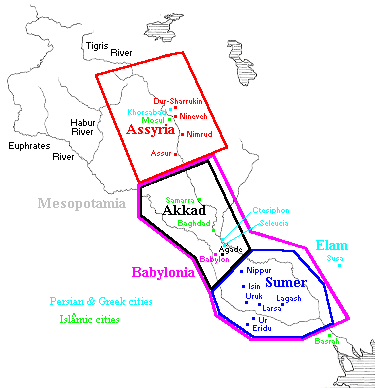 The purpose of writing the book of Genesis ('origins') was
precisely to re-educate the Israelite slaves as to their ancestral
background. It seems extremely likely that Moses himself learned of the stories of his cultural
heritage from Jethro who, as high-priest of his clan, must have been conversant in the oral traditions of
Abraham and his origins in Sumer. In the New Chronology of the ancient Near East being developed
by myself ( link below ) and other European scholars, Moses lived at a time when the great epic
literature of the Sumerians was first being widely disseminated in Akkadian (the language of the Old
Babylonian Period). Could Moses have acquired such documents from Jethro? And did he read there of
the Flood and the building of the Tower of Babel?"
The purpose of writing the book of Genesis ('origins') was
precisely to re-educate the Israelite slaves as to their ancestral
background. It seems extremely likely that Moses himself learned of the stories of his cultural
heritage from Jethro who, as high-priest of his clan, must have been conversant in the oral traditions of
Abraham and his origins in Sumer. In the New Chronology of the ancient Near East being developed
by myself ( link below ) and other European scholars, Moses lived at a time when the great epic
literature of the Sumerians was first being widely disseminated in Akkadian (the language of the Old
Babylonian Period). Could Moses have acquired such documents from Jethro? And did he read there of
the Flood and the building of the Tower of Babel?"
"What Moses did not know was that a far more ancient city existed in Sumer which was also called Nun.ki - the original place of that name. Indeed, Sumerian tradition claimed it to be the first city in the world. This older Nun.ki was also known as Eridu - the city where, according to the Sumerian King List, kingship was first 'lowered from heaven' and where the great god Enki ('Lord of the Earth') had his temple. Archaeology has revealed that the temple of Eridu was the first sacred shrine to be built in Sumer and that, over the centuries, it grew into a substantial structure."
From the link below; "It is my belief that the original story of the Tower of Babel describes the building of the last great phase of the temple of Enki at Eridu. This was begun in the Uruk Period - the archaeological era which I have argued immediately followed the Flood. One of the most powerful rulers of Uruk (Ur) at this time was Enmerkar, a mighty king of the heroic age and second only to Gilgamesh in the epic literature. The Sumerian King List makes Enmerkar the second king of Uruk ( Ur ) after the Flood which would place his reign at the time when the building of Enki's temple at Eridu reached its apogee". This from Tower of Babel
"The Bible, it must be said, has occulted the truth about the Flood.
The Hebrew priests - no doubt appalled at the religious free-for-all among
the common people three thousand years ago -
denied the ex-physicality of their God, Yahweh, and denied the archaic
tradition that he had fallen from the Sky, died, and come back to life again.
The Hebrew priests thus dissuaded the
Israelites from aspiring to an afterlife in similar fashion (such a quest
was all the rage in ancient Egypt). Man's lot was on the Earth,
they declared, and in death man would
simply return to the dust from which he had been created by God. In contrast
to the pagans, who sought their afterlife on the planet of God, the Hebrew
people were brainwashed with the idea that God's
abode was unreachable - more distant than even the farthermost visible star"
... By Alan F. Alford , which is another theory but indicates drastic
changes in a religious belief held for centuries by the ancients.
What the bible tells us very clearly is that Moses tried to stop the false god worship over and over and the people wouldn't listen. Hebrew sources say Moses followed Yahweh and that is not true. But it does say the people followed the false god. We think the punishment was of cource, that all the people were allowed to die so that the next generation would know the true God. They never did as scripture points out over and over. Again and again Josuha destroys temples built to worship Baal/Enlil.
Where did men learn these things?
So what is a true Mystery School? The word "mystery" comes from Latin and Greek words which mean "to initiate; to close the eyes or lips." A true Mystery School is part of an ancient lineage whose sole purpose is to preserve and pass on the original Ancient Wisdom and Truth Principles or Precepts, as they were revealed to Enlightened Beings such as Avatars and Masters who have been sent to earth to help humanity awaken to the Truth of Being. In a nutshell, this ageless knowledge helps serious seekers who are ready for the daily discipline of transforming themselves to experience the answers to all life’s mysteries by learning to live outside and above the mass consciousness in their everyday awareness.
This Higher Consciousness is often called Illumination or Enlightenment. How can you achieve this? Step by step by step! And along the way and by very practical means you learn to: * integrate all levels of being - spiritual, mental, subconscious, emotional and physical * transform your personality * master powers both within and without * complete your ancient karma and release 3-D ties in preparation for stepping off the wheel of reincarnation * become soul-infused and ultimately Christ Conscious. see The initiate
From Abraham to Joseph and the Plot to kill the King
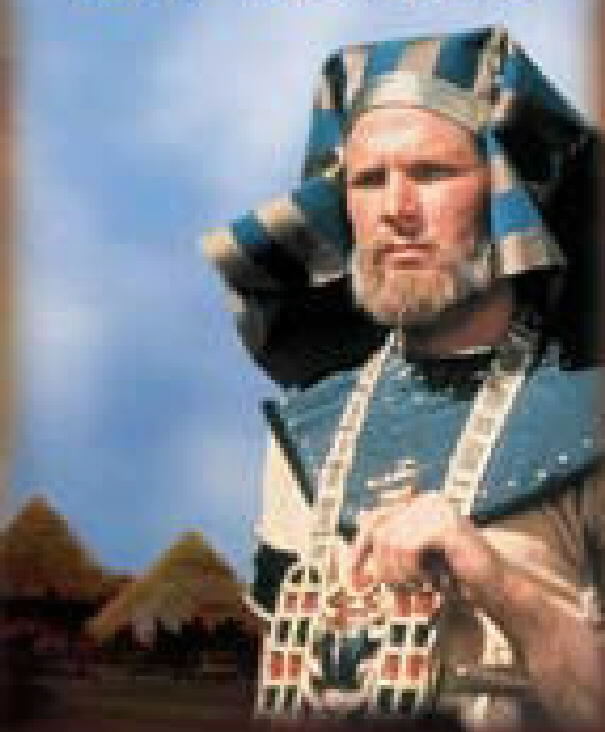
On our Widows Son page we explained the significance of Joseph as an Egyptian pharoah. He ruled upper Egypt for 6 years. He was the leader of the Hyksos in a time when they tried to take over Egypt. This first section is the version from the King James Bible of which we have already explained, and we do not agree with. But we put the two connecting stories together and it still adds up to the same thing. Joseph and his two brothers, Simeon and Levi were indeed behind the murder of Seqenenre Tao II. This would have completed the takeover. Ahmose, Seqenenre's second son, stopped him.
From the KJB
Abraham had many sons, one whos' name was Isaac. Another son, Jacob was called "Isreal" by God. Jacob's sons were Simon and Levi, Judah, Issachar and Zebulun. By Rachel he had sons' Joseph and Benjamin. They lived in the land called Canaan. Canaan is now Jordan, Iraq, Iran and Syria.
Joseph's brothers hated him because he had 'dreams'. From these dreams, he seemed to prophesy the future and order everyone around. Jacob had come to him and asked him , " Do you intend to reign over us ?", "Will you actually rule us? " . The brothers sat up a plot to kill him, but instead threw him in a well and then sold him to some passing Ishmaelites for twenty shekels of silver, who took him to Egypt. Joseph was 17 years old. This may have occured around 1610BC.
Joseph was bought by the Kings( Potiphar ) captain of the guards . Genesis 39:1 .. Joseph served as household attendent for 2 years. The queen desired him, so she tried to lure him into her chamber. He refused the offer so she accused him of rape. Joseph spent time in prison, and there he foretold the future by once again interperting dreams. The King heard of this amazing ability and no one else in his court could do this, so Joseph was brought to interpret the King's dreams. He was able to foretell a famine that would cover all of Egypt for seven years. Joseph told the King to double the harvest for seven years so there would be enough food to last. The phophesy came true and the people didn't starve.
For this, Joseph was then placed in charge of the palace and above all members of the king's staff. From then on Joseph became very powerful and was called 'Vizier' at the age of thirty. He was second in command of all of Egypt, answering only to the King, who was Apophis.. Joseph served ten Kings and was the sole ruler for six years sometime around 1571 - 1565BC. He would have been 73 when Seqenenre was murdered.
Joseph's brothers were looking for him due to the famine in Canaan. They made several trips to Egypt to get food. Joseph knew them, but they didn't know him. He invited them to come to Egypt and live but then he finally broke down to tears, and because they were his brothers, he envited the entire family to come to Egypt. The Famine became so bad they had to sell their land and livestock for food. They sold the land to the King and then sold themselves as slaves to get food. Before Jacob died, he 'laid his hand on Manasseh's head' and told the other sons to say away from Simeon and Levi for they are wicked and cruel. Jacob lived in Egypt for seventy years. He died at the age of 147. When Jacob dies, The brothers become afraid of what Joseph might do to them.. The Book of Genesis.
It is believed that Joseph was still bitter about his being sold, and since he had set about to gain the secret knowledge from the True King, Seqenenre, he didn't care what happened to his brothers if they were caught so he sends them to do the deed.
Genesis 49:7 "O my soul, come not thou into their secret; into their assembly, mine honour, be not thou united; for in their anger they slew a man, and in their self will they digged down a wall". (A medifore)(This may refer to the walled city of Avaris, which was then destroyed by Ahmose.)
Archeological evidence
A brief word on Joseph. As vizier of Egypt and a great land/tax reformer for Pharaoh, Joseph fits admirably into the late 12th Dynasty when Senuseret III undertook sweeping changes in state organisation, returning much, if not all, of the regional administration into the hands of a central authority. Some time late in his reign, or early in that of his co-regent and successor Amenemhat III, the annual Nile flood rose dramatically (as recorded by the high Nile Level Texts at Semna) - an event which would have undoubtedly caused serious crop damage, leading to severe famine. Amenemhat III also appears to have undertaken similar large scale works in respect of Egypt's irrigation and water system - in particular in relation to Lake Moeris (Birket Qarun) in the Faiyum. Interestingly enough, the canal which feeds this system is called Bahr Yussef ('waterway of Joseph') - a tradition, linking Joseph to the region, which goes back to some distant period in Egypt's long and complex history.
It was near to the end of the 12th Dynasty that the city of Avaris was also originally founded - according to the excavation results from Tell ed-Daba (Stratum H =d/2). With our new date of c. 1620 for the end of the 12th Dynasty in mind, can we not associate this new foundation with Joseph himself? We know that the Israelite population was centred in the district of Goshen which was almost certainly in this area of the Eastern Delta. We are also told that the settlement of Joseph's brethren was in 'the region of Rameses' [Genesis 47-11]. It is interesting to note that the modern regional capital near Tell ed-Daba is the town of Facusa - an Arabic name which may well represent the ancient Egyptian district P3-Gws3n (Pa-Gusan = 'the Goshen' - cf. Faiyum = Pa-Yam = 'the Sea').
NOTE; this 1620 date aligns with our findings. There is only 66 years between this Avaris 12th dynasty date and Seqenenre's murder. The city of Rameses was called Avaris before the 16th dynasty.
Genesis 41:37-43 states that Joseph was appointed Vizier
of Egypt at the age of 30 years and 50:22 indicates that he
later chose to reside amongst his own people, no doubt
administering to the needs of the Delta region from his
personal estate granted to him by the pharaoh. We are also
informed [Exodus 13:19] that, several generations after
Joseph's death, his embalmed body was exhumed from his
place of burial, on the orders of Moses, and taken out
of Egypt by the departing Israelites who had initially
assembled at Ramses (i.e. Avaris) to begin their long
journey across Sinai to the Promised Land.
(We have other finds that indicate the body wasn't moved)
So, would it be stretching all credulity to imagine that we could identify the original tomb of Joseph at Tell ed-Daba? Perhaps, but let us consider for a moment the largest (and probably the earliest) tomb within the gardens of the 'governor's residence' recently excavated by the Austrian mission at Tell ed-Daba. This big vaulted mudbrick tomb, which possessed the only attached mortuary chapel so far found in the city (suggesting a cult for the deceased or some kind of ancestor worship), was found to be virtually empty - there was no body. It appears that it, and any accompanying burial goods, had been removed by means of a tunnel which was dug to gain access to the burial chamber not many generations after the sealing of the tomb. The chapel of this Tomb F/I-p/19:1 did, however, contain a quite remarkable find - a colossal statue of an Asiatic dignitary. The twice life-size limestone statue, with red coloured 'mushroom-shaped' wig/hair and pale yellow skin colour, had been violently smashed into fragments and the head defaced. The surviving pieces show that this dignitary carried a throw-stick (one of the determinatives used in Egyptian writing to denote a foreigner) across the right breast, just as an official would bear his sceptre of office.
Remnants of the original paint survive on the statue's right shoulder indicating that the owner had been portrayed wearing a garment embroidered or woven in a multi-coloured design - a coat of many colours? Could the savage destruction of the statue be evidence of the local Egyptians' revenge against the Israelites - directed towards the cult image of Joseph following the Exodus of his descendants out of Egypt? A highly speculative proposition - but one which is entirely consistent with an historical setting only made possible through the new lower chronological model on offer here. Being able to look upon the likeness of Joseph (albeit in such a forlorn condition), after an interval of nearly 3700 years, is a tantalising prospect indeed!
More Archeological evidence
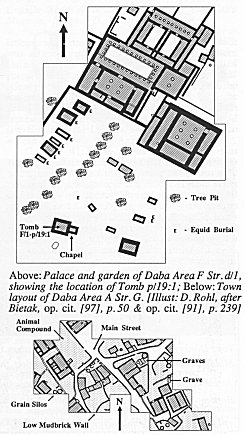 The remarkable excavations of the Austrian Institute for
Egyptology at Tell ed-Daba in the eastern Nile Delta have
revealed an amazing archaeological story. The site is now
universally accepted as the city of Avaris, stronghold of
the Hyksos 15th Dynasty and in the New Chronology, during
the town's earlier phase (strata H to G1), the major
population centre of the Israelites throughout their
long sojourn in Egypt. So what do the findings of Field
Director Manfred Bietak tell us about the town's population
in the pre-Hyksos era?
The remarkable excavations of the Austrian Institute for
Egyptology at Tell ed-Daba in the eastern Nile Delta have
revealed an amazing archaeological story. The site is now
universally accepted as the city of Avaris, stronghold of
the Hyksos 15th Dynasty and in the New Chronology, during
the town's earlier phase (strata H to G1), the major
population centre of the Israelites throughout their
long sojourn in Egypt. So what do the findings of Field
Director Manfred Bietak tell us about the town's population
in the pre-Hyksos era?
The people of the MB IIA settlement are described as Egyptianised Canaanites living in fairly simple dwellings within enclosed compounds, situated in an eastern suburb of the town. Further to the west (in Area F) a 'governors' residence was built near to the end of the 12th Dynasty (Stratum d/2 = H). At first this took the form of a typical Syrian 'Mittelsaal' house which was later built over (Stratum d/1=G/4) with a much more elaborate and substantial Egyptian-style palace. The 'Canaanite' population living in the suburbs to the east of the palace compound appear to have introduced long-haired sheep into the Eastern Delta which, along with pairs of donkeys and goats, were often buried at the entrances to the mudbrick burial vaults belonging to the heads of the households. Some of these Asiatics reached a high status in the community as is indicated by the important Canaanite tombs directly associated with the governor's residence itself.

Figure 28: Part of a wall painting from the tomb of Khnumhotep at Beni Hassan (dated to the reign of the immediate predecessor of Senuseret III), showing a group of Asiatics, under the leadership of Abishai, entering Egypt. Both the women and men wear garments with complex geometric designs - 'coats of many colours'. According to the Biblical tradition, Joseph was brought down to Egypt to be sold into slavery by just such a group of 'Midianites'. In the New Chronology, the appearance of the Asiatics portrayed in Khnumhotep's tomb is just a generation earlier than the descent of Joseph into Egypt.
At the end of Tell ed-Daba Stratum G (near the close of MB IIA) there appears to have been considerable hardship in the town - tooth enamel from human skeletal remains indicating obvious signs of malnutrition, probably to be associated with severe famine. Mass burials in shallow pits, right at the end of Stratum G on Tell A and Stratum C in Area F, also indicate a sudden catastrophe of some kind. Following this disaster, the Egyptianised Canaanite eastern suburb was abandoned for a period before a new group of non-Egyptianised Canaanites rebuilt the district on a completely new orientation and layout. [91]
In the New Chronology (which is not at present accepted by Professor Bietak) the archaeological findings of the Austrian team fit very well with our understanding of the Israelite Sojourn in Egypt - during Strata H to G1 at Tell ed-Daba. Archaeology has revealed a disaster at Avaris near to the end of MB IIA. Evidence of sudden multiple deaths and what appears to be the subsequent departure of the early Canaanite population would fit well with the traditional Exodus narrative, whilst the new Canaanite group arriving at the site (Stratum F) could be seen as the first archaeological evidence for the occupation of the Delta by the Early Hyksos (perhaps to be equated with the Amalekites who, according to Exodus 17:8-16, clashed with the departing Israelites before they entered Sinai). see - Article 1
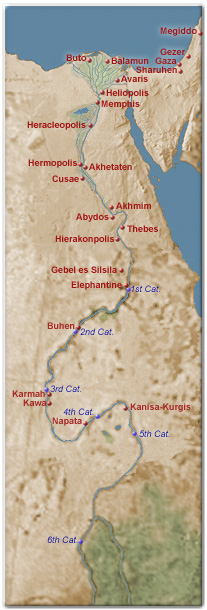 Further interesting findings from the excavations which should be mentioned are (a) the high
proportion of infant burials at the site of Tell ed-Daba - some 65% of all
interments on Tell A were those of children under two
years of age (no demographic evidence for a preponderance
of male infant burials to support the story in Exodus
1:15-22 is, of course, obtainable when dealing with
infant remains; however, the female adult population
was significantly greater than the male - a ratio of
1.4 to 1); [93] and (b) the fact that the anthropological
data indicates that a substantial part of the female
population of Avaris originated from Syria [94] (in
the book of Genesis most of the Patriarchal males
undertake marriage contracts with women from Haran
in northern Syria - could this practice have been
continued during the Israelite Sojourn in Egypt?).
Further interesting findings from the excavations which should be mentioned are (a) the high
proportion of infant burials at the site of Tell ed-Daba - some 65% of all
interments on Tell A were those of children under two
years of age (no demographic evidence for a preponderance
of male infant burials to support the story in Exodus
1:15-22 is, of course, obtainable when dealing with
infant remains; however, the female adult population
was significantly greater than the male - a ratio of
1.4 to 1); [93] and (b) the fact that the anthropological
data indicates that a substantial part of the female
population of Avaris originated from Syria [94] (in
the book of Genesis most of the Patriarchal males
undertake marriage contracts with women from Haran
in northern Syria - could this practice have been
continued during the Israelite Sojourn in Egypt?).
A few words would perhaps be appropriate at this point in respect of the the Exodus 1:11 reference to the Israelites building the store cities of Raamses and Pithom. Raamses was of course the 19th- 20th Dynasty capital city of Pi-Ramesse, long known to the scribes of the ancient Near East and therefore to the biblical writers exiled in Babylon. However, the city which had stood on the same site as the Ramesside foundation in the earlier periods was called hwt-w'rt (i.e. Avaris). The biblical reference to the building of Raamses and Pithom (possibly Tell er-Retabi) by the Israelites should be seen in the same light as a modern encyclopaedia stating that the Romans built a garrison town at York when in fact the town was called Eboracum in the Roman era. The name Ramesses was associated with the Qantir/Tell ed-Daba region long after the city itself had been abandoned. It is therefore quite understandable for the biblical scribes residing in 6th-century Babylon to refer to the city of the Israelite Sojourn by the name in use in their own day rather than its older name of Avaris.
The Murder of a King - The Birth of a Child
The ( Exodus 1 ) King of the Hyksos at Avaris that Joseph served, may have ordered the killing of the first born of Isreal. (Proof above) This would have been ordered because Apophis had not as yet been able to gain the secrets of king-making and at this time the rumors about the 'prince ' who would save the people had begun to circulate. Apophis would have been desperate at this point, but it was too late.
 Seqenenre and Apophis were having a 'words' war. Apophis
sent a message to Seqenenre saying, that the hippopotami in the
sacred pool at Thebes kept him awake with their snoring. Tao
was outraged and this was regarded as an insult. The hippopatami
were 400 miles from Avaris. The letter to Seqenenre is on
Widow's Son 1
Seqenenre and Apophis were having a 'words' war. Apophis
sent a message to Seqenenre saying, that the hippopotami in the
sacred pool at Thebes kept him awake with their snoring. Tao
was outraged and this was regarded as an insult. The hippopatami
were 400 miles from Avaris. The letter to Seqenenre is on
Widow's Son 1
As the incarnate 'Seth', Joseph was in charge of getting the 'secrets' away from Seqenenre and returning them to the rightfull heirs, the Olai. With this duty before him, wheather Seqenenre was considered evil or not, ( which we don't think he was ) Joseph had to do this. This of course, set in motion the the spiritual birth of the 'Child', who centuries later would incarnate in living flesh as greatest of the 'Shepherd Kings'. In order to do this, there had to be 'no trace' of the secret ritual left in Egypt. Joseph, Levi, Simeon and the young priest, together accomplished this. Seqenenre, a good man, was sacrificed to bring the 'Word' out of Egypt. More about Moses
After this is a 'done deal', the Set worshipers are put to death by Moses' attack on the Hyksos. The army he lead ran them off or killed many while the descendents of Abraham were allowed to leave Egypt. But as history tells us, Moses was put in charge of the Hebrew nation and Aaron became the first High Priest of the Jews. Their job was to re-educate the remaining Hebrews and teach them that Set was Baal, Jehovah, Yehweh, was a false god. What Moses tried to teach was the Egyptian religion including Aten 'the one god', the good god. Further proof of this was found on Mount Sinai or Mount Horeb by archeological expert Sir William Flinders Petrie in 1904. To read about this amazing find see Ark of the Covenant 2 The one thing the Egyptians considered the most important of all was the worship of the goddess Hathor and the temple he found was dedicated to her.
Some historians proclaim Setti I and Ramsess of being in charge of the Egyptian empire when Moses returns. This would be three hundred years after the Hyksos are driven out by Ahmose which is said to be 1555 - 1550BC. It also doesn't align with Moses' life, the army he lead or his mention in the degree work, which we feel puts him in Egypt when Seqenenre is alive ie., 1554 BC.
The argument that chariots were not introduced into Egypt until the
15th Dynasty has been used to undermine the proposal for a 13th-Dynasty
Exodus. This is because Exodus 14:5-9 describes Egyptian chariots in pursuit
of the departing Israelites. However, Wolfgang Helck [in JNES 37 (1978),
pp. 337-40] has shown that there is evidence for chariots in Egypt before
the Hyksos era. A stela of a King's Son and Commander, Khonsemwaset,
shows the owner with his wife. Under the couples' chair is a pair of gloves.
Given Egypt's climate, gloves could only be used for holding the reins of chariot horses. ..
from by David M. Rohl
The 17th Degree of the A.A.S.R.F. says, " the writings of the Apostles were only an incomplete fraction of the full philosophical and religious teachings and mysteries to be handed down." The rest were hidden and forgotten as time passed.
The Invasion of the Outsiders
The prosperity of the Middle Kingdom was ravaged by what is called the First and Second Illness. Climate changes brought about drought. Crops died, and the threat of starvation hung over Egypt. The First Illness was between 2180 and 2080 BC.
When the First Illness ended , The King ordered building projects that helped the common people. They built a canal all the way to the Red Sea from the Nile. This helped irrigate the fields. They built dikes to trap flood waters from the Nile and they drained the swamps of Lower Egypt creating thousands of acres of new farm land. One King of the period boasted; " I was one who cultivated grain and loved the Harvest God. The Nile greeted me and every valley. None was hungry in my years , none thursted then. Men dwelt in peace through that which I wrought, and conversed of me."
"The Second Illness began around 1640 BC. This lasted
about 70 years. Civil war broke out leaving Egypt prey to
outside enemies. Invaders swept in from Suez in horse drawn
chariots. The conquerors were Asian nomads known as the Hyksos ,
which means 'the rulers of the uplands'. They ruled from 1640BC
to 1550BC."
( World History, textbook version, Dr. Lloyd Swenson, Professor
of History, University of Houston, 1994 )
Apparently some of the Semite/Asiatics
mixed with the Hyksos, who appeared out of Syria and Palestine.
This group did not believe in the concept of 'Maat' and
because the Egyptians were generous and trusting, and mostly
provided the invaders with water and land, the Hyksos were able
to gain control of Lower Egypt. The Hyksos also had advanced
weapons and had skills in making bronze tools. The Chronology
page says, the Hyksos began rule in 1663 BC, in the city of
Avaris, which was changed to Ramesseau during the writing of the
Bible, and is now called Memphis. This link shows the proof
that there were two ruling factions in power in Egypt at the
same time.
The Second Intermediate Period of Egypt
They had adopted 'Set' as their chief god, who by Egyptian mythology murdered his brother Osiris. Since the Egyptian Kings hoped to become Osiris in the afterlife, this murder and the adaptation of Set was appalling and completely evil.
One Egyptian wrote of this unhappy time , " .. The desert is spread over the lands. The provinces are destroyed. Barbarians are come into Egypt from without... Laughter has disappeared forever. It is wailing that fills the land."
Manetho, Aegyptiaca., frag. 42, 1.75-79.2
Proof Seqenenre was in rule at the time Moses was an army captain.
Tutimaeus . In his reign, for what cause I know not, a blast of God smote us; and unexpectedly, from the regions of the East, invaders of obscure race marched in confidence of victory against our land. By main force they easily overpowered the rulers of the land, they then burned our cities ruthlessly, razed to the ground the temples of the gods, and treated all the natives with a cruel hostility, massacring some and leading into slavery the wives and children of others. Finally, they appointed as king one of their number whose name was Salitis. He had his seat at Memphis,(Avaris) levying tribute from Upper and Lower Egypt, and leaving garrisons behind in the most advantageous positions. Above all, he fortified the district to the east, foreseeing that the Assyrians, as they grew stronger, would one day covet and attack his kingdom.
In the Saite [Sethroite] nome he found a city very favorably situated on the east of the Bubastite branch of the Nile, and called Auaris (= Avaris ) after an ancient religious tradition. This place he rebuilt and fortified with massive walls, planting there a garrison of as many as 240,000 heavy-armed men to guard his frontier. Here he would come in summertime, partly to serve out rations and pay his troops, partly to train them carefully in manoeuvres and so strike terror into foreign tribes.
Josephus Flavius quoting passages concerning the Hyksos from Manetho's Aegyptiaca
Flavius Josephus: Against Apion
Book 1, section 73
Under a king of ours named Timaus (Tutimaeus) God became angry with us, I know not how, and there came, after a surprising manner, men of obscure birth from the east, and had the temerity to invade our country, and easily conquered it by force, as we did not do battle against them. After they had subdued our rulers, they burnt down our cities, and destroyed the temples of the gods, and treated the inhabitants most cruelly; killing some and enslaving their wives and their children.
Then they made one of their own king. His name was Salatis; he lived at Avaris and both the upper and lower regions had to pay tribute to him. He installed garrisons in places that were the most suited for them. His main aim was to make the eastern parts safe, expecting the Assyrians, at the height of their power, to covet his kingdom, and invade it. In the Saite Nome there was a city very proper for this purpose, by the Bubastic arm of the Nile. With regard to a certain theologic notion it was called Avaris. He rebuilt and strengthened this city by surrounding it with walls. and by stationing a large garrison of two hundred and forty thousand armed men there. Salitis came there in the summer, to gather corn in order to pay his soldiers, and to exercise his men, and thus to terrify foreigners.
After a reign of thirteen years, he was followed by one whose name was Beon, who ruled for for forty-four years. After him reigned Apachnas for thirty-six years and seven months. After him Apophis was king for sixty-one years, followed by Janins for fifty years and one month. After all these Assis reigned during forty-nine years and two months. These six were their first kings. They all along waged war against the Egyptians, and wanted to destroy them to the very roots.
"These people, whom we have called kings before, and shepherds too, and their descendants," as he says, "held Egypt for five hundred and eleven years. Then," he says, "the kings of Thebes and the other parts of Egypt rose against the shepherds, and a long and terrible war was fought between them." He says further, "By a king, named Alisphragmuthosis, (Seqenenre) the shepherds were subdued, and were driven out of the most parts of Egypt and shut up in a place named Avaris, measuring ten thousand acres." Manetho says, "The shepherds had built a wall surrounding this city, which was large and strong, in order to keep all their possessions and plunder in a place of strength.
Tethmosis (Ahmose), son of Alisphragmuthosis, (Seqenenre) attempted to take the city by force and by siege with four hundred and eighty thousand men surrounding it. But he despaired of taking the place by siege, and concluded a treaty with them, that they should leave Egypt, and go, without any harm coming to them, wherever they wished. After the conclusion of the treaty they left with their families and chattels, not fewer than two hundred and forty thousand people, and crossed the desert into Syria. Fearing the Assyrians, who dominated over Asia at that time, they built a city in the country which we now call Judea. It was large enough to contain this great number of men and was called Jerusalem.
(We changed the name of Alisphragmuthosis from Kamose to Seqenenre because we have proof that Ahmose was Seqenenre's son. see the table below and the XVII Dynasty, scroll down to "The second intermediate period of Egypt". - Then go to the The New Kingdom of Egypt where you see Ahmose as beginning the 18th dynasty. Kamose was his brother and only ruled three years after being killed in the battle to drive the Hyksos out. Amhose did rule for 25 years, the first part of which was along side his mother, whom we called Amhose I.) You will also find a genealogical chart that leads from Ahmose to Amenhotep IV who had One God and became Akhenaton (the "Spirit of the Aton")
Book 1, section 93
I shall quote Manetho again, and what he writes as to the order of the times in this case. He says "After this people or shepherds had left Egypt to go to Jerusalem, Tethmosis, (Ahmose) who drove them out, was king of Egypt and reigned for twenty five years and four months, and then died; ..."
Book 1, section 227
He writes these words: "Those sent to work in the quarries lived miserably for a long while, and the king was asked to set apart the city Avaris, which the shepherds had left, for their habitation and protection; and he granted them their wish.
According to the ancient mythology, Avaris was Typhon's ('Typhon', a synonym for Seth - Osiris's evil brother) city. But when these men had entered it, and found it suitable for a revolt, they chose a ruler from among the priests of Heliopolis, whose name was Osarsiph . They swore an oath that they would obey him in all things. The first laws he gave them were that they should not worship the Egyptian gods, nor should they abstain from any of the sacred animals that the Egyptians held in the highest esteem, but could kill them, and that they should not ally themselves to any but those that were of their conspiracy.
After making such laws as these, and others contrary to Egyptian customs, he ordered that the many hands at their service to be employed in building walls around the city and prepare for a war with king Amenophis. He colluded with the other priests, and those that were polluted as well, and sent ambassadors to those shepherds expelled by Tethmosis (Ahmose) to Jerusalem, informing them of his own affairs, and of the state of those others that had been treated so shamefully, and desired that they would come united to his assistance in this war against Egypt. He also promised their return to their ancient city and land of Avaris and plentiful support for their people; that he would protect them and fight for them if need be, and that the land would easily be subdued. The shepherds were delighted with his message, and assembled two hundred thousand men. Shortly they arrived at Avaris.
King Amenophis of Egypt, when he heard of their invasion, was perplexed remembering what Amenophis, the son of Papis, had foretold him. He gathered many Egyptians, and deliberated with their leaders, and sent for their sacred animals, above all those worshipped in the temples, and ordered the priests to hide the images of their gods with the utmost care. He also sent his son Sethos, who was also called Ramses, and only five years old, from his father Rhampses to a friend of his. He continued with three hundred thousand of the most warlike Egyptians against the enemy, who met them. But he did not join battle with them, afraid to be fighting against the gods. He turned back and returned to Memphis,(Avaris) where he took Apis and the other sacred animals which he had sent for, and continued to Kush, together with his whole army and masses of Egyptians.
The writers of Lost secrets of the Sacred Ark say
that Osarsiph is Moses. The above passage may also prove that Ramses was not Pharoah
when Moses returned. This also proves our theory that
Amenhotep II was ruler when Moses returned to Egypt..Depending
upon which history book you read, there are two
possible candidates for the Exodus pharoah.
The first is pharaoh Amenhotep II who may have ruled
from (1427-1401 B.C.). He was the son of Thutmose III, who ruled
from either (1490-1450) or (1479-1425 B.C.), the other possible
candidate. Scholars disagree as to the exact dates that these
two men ruled which makes it difficult to pin point the exact
one.
This also may be the sequence in Exodus when Moses asks the Pharoah to "let the people go". No battle was fought and the real Egyptians apparently left and went to Ethiopia and stayed 13 years. The writings of Flavius Josephus seem to be the only surviving record of a conflict that involved Moses, which was against the Ethiopians before he left Egypt. The Ethiopins had easily made an inroad to Egypt and had pushed all the way to Memphis.
(Moses being 36 - 38 years old)- "So Moses, at the persuasion both of Thermuthis (his step-mother) and the king himself, cheerfully undertook the business: and the sacred scribes of both nations were glad; those of the Egyptians, that they should at once overcome their enemies by his valor, and that by the same piece of management Moses would be slain; but those of the Hebrews, that they should escape from the Egyptians, because Moses was to be their general. But Moses prevented the enemies, and took and led his army before those enemies were apprized of his attacking them; for he did not march by the river, but by land,..." The King summoned that Moses should help with this, "which he did with eagerness",..and... Moses made war with Ethiopia
When Moses returns...
- The king of Ethiopia was under an obligation to the
pharaoh and received him, and took care of the masses that were with him,
while the land supplied all that was necessary for the men's
sustenance. He gave them cities and villages to live in, that
was to be from its beginning during those fatally determined
thirteen years. He sent his army to guard the borders of Egypt
in order to protect King Amenophis. And this is what happened
in Kush."
Manetho on the Hyksos
- Tutimaeus: Also Tutimaios, Timaios, perhaps
Dedumos? There were two kings of this name during the Second
Intermediate Period, Djedneferre and Djedhetepre, variously
assigned to either the 13th or the 16th dynasty. Many historians
reject the suggestion that Tutimaeus is identical with Dedumos.
However we see that the name Thermuthis (Moses' step-mother) is very close to the name
Tethmosis, the queen's real son..Amhose.
- Salatis: Salitis, possibly Sheshi
- Beon: Yakubber?
- Apachnas: Khyan
- Apophis: Apepi I
- He: Manetho
- Alisphragmuthosis: Seqenenre
- Tethmosis: Ahmose
- Typho: Set (Seth)
An Egyptian term misunderstood by Flavius: This whole nation was styled Hyksos, that is, Shepherd-kings: for the first syllable Hyk, according to the sacred dialect, denotes a king, as is 'sos' a shepherd; but this according to the ordinary dialect; and of these is compounded Hyksos: but some say that these people were Arabians." Now in another copy it is said that this word does not denote Kings, but, on the contrary, denotes Captive Shepherds, and this on account of the particle Hyk; for that Hyk, with the aspiration, in the Egyptian tongue again denotes Shepherds, and that expressly also; and this to me seems the more probable opinion, and more agreeable to ancient history. Josephus Flavius,Against Apion, 1,73
Moses: It was also reported that the priest, who ordained their polity and their laws, was by birth of Heliopolis, and his name Osarsiph, from Osyris, who was the god of Heliopolis; but that when he was gone over to these people, his name was changed , and he was called Moses.
After the fourth generation of Hyksos kings [Shepherd Kings ] had ruled, they felt entitled to become 'Horus' as the Egyptians did when they became king. They also wanted eternal life. Only the secret ritual of 'death' and 'resurrection' could be the beginning of eternal life in 'Osiris', and this was known only by the Egyptian High Priests and the King. It appears that the Hyksos ( HIHK-shas ) King , Apepi I ( Apophis ) and Seqenenre Tao II began a 'power' struggle for the 'supreme right to rule' and control the entire country, however unless Apophis was 'ritually raised' to be the Horus, he could not qualify. If Joseph was vizier at this time, it would have been his job to help get 'the secrets' by what ever means necessary.
The True King and "Master"
A secret book called 'The Book of Overthrowing Apophis' was found containing magical words and spells to ward off the evil of Apophis. Seqenenre said the prayers every day in the Temple at high noon to keep Apophis away.
The Temple at Thebes where Seqenenre said his prayers was much like the Temple of Solomon, it had the two pillars, and the same exact doors to the East, West and South. When he was murdered the great "secrets" of king making [ the secret ceremony ] were lost forever.
![]()
The order of Melchizedek - The Priesthood
Melchizedek first appeared in the Bible's Old Testament bringing bread and wine to Abraham after his victory in Genesis 14 over the four kings who had besieged Sodom and Gomorrah and taken his nephew Lot prisoner. In turn, Abraham gave Melchizedek as priest a tithe of ten percent of the bounty that he took in battle.
Psalm 110:4 names Melchizedek as representative of the priestly line through which a future king of Israel's Davidic line was ordained. The future king - in Christian belief, Jesus Christ - is referred to as a "priest forever after the order of Melchizedek".
Hebrews 7:3 in the New Testament refers to Melchizedek as a king "without father or mother or genealogy", a reference which some Christians take as referring to Melchizedek's true nature as an angel or even as Jesus himself, appearing thousands of years before his Earthly incarnation.
Some rabbinic scholars identify Melchizedek with Noah's son Shem. The account of Melchizedek given in the Dead Sea Scrolls has also divided scholars into two camps, one that touts his existence as a mortal man and another that identifies him with the archangel Michael.
Our tractate thus presents a number of challenging features of special interest to the historian of religions; it is indeed a mélange of traditions of Jewish, Christian, and Gnostic stamp. Its presentation of the figure of Melchizedek is a case in point: he is not only the ancient "priest of God Most High" known to us from the Bible, but he also returns as an eschatological "high-priest" and "holy warrior." Such Jewish apocalyptic material as the Melchizedek fragments form Qumran (11QMelch) and 2 (Slavonic) Enoch shed considerable light on these features.
"The tractate Melchizedek was written originally in Greek, probably in Egypt. A third-century date is likely, though it could be earlier (or later)."
MELCHIZEDEK IN THE HEBREW BIBLE. This non-Israelite priest-king appears in two places in the Hebrew Bible: Genesis 14:18-20 and Psalm 110:4. My own reading of the texts is that Genesis is drawing on traditional material from the Judean royal cult (or perhaps even from pre-Israelite traditions) to tie the more recently introduced figure Abram to Jerusalem (Salem) and its temple cult. Psalm 110 seems to indicate that there was a priesthood of Melchizedek tied to the Davidic king in the temple cult.
JUBILEES 13:22-27. The story of the assault of the four kings on the cities of the plain appears in Jubilees, but the section involving Abrams defeat of the invaders and his encounter with Melchizedek are missing. The fragment of v. 25 and its continuation in 26 lead me to think that the Melchizedek story once stood here but was lost or suppressed...see Melchizedek
He is not explicitly a priest in the fragments we have, although the tantalizing assertion that the lot of Melchizedek is the Day of Atonement in the tenth Jubilee in which to atone for all the sons of El may refer indirectly to his function as Celestial High Priest (and may also be the only echo of the two biblical passages).
We called the 'false gods' or fallen angels The Son's of El or El'Elyon.. the god of storms and war. As we see above, the account of Abraham and his defeat of invaders with Melchizedek's help is incomplete. Furthermore we encountered evidence that Melchizedek IS connected to the Egyptian priests as is Jesus.
Psalm 110:4. “The LORD has sworn and will not change his mind: ‘You are a priest forever , in the order of Melchizedek.’ ” The entire Psalm is a prophecy of the millennial rule of Israel’s Messiah. Jesus applied it to Himself (Matt. 22: 43-45; Mark 12:36; Luke 20:42). The Psalm is also applied to Christ in Acts 2:34-35 and Hebrews 1:3; 5:6; 7:17,21; and 10:12,13. This scripture tells us that Melchizedek’s order [type or manner] of priesthood [both priest and king] foreshadows the priesthood of the coming Messiah. This was a new concept to Israel, whose law required priests only in Aaron’s lineage. We think Aaron and Moses both lived and studied under Egyptian priests who are connected to the order of Melchizedek.
Tracing the order of Melchizedek back to it's source connects it firmly to the Druids. Druids with a Near East group known as the Kilbeiri of Galatia, who were followers of Melchizedek and, therefore the precursors of many esoteric groups in biblical Judaism such as the Zadokites, the Therapeutae and the Essenes. In order to prevent disrespect and dishonor to God, a Celtic bard was forbidden to name him except inwardly and in thought. This bears startling resemblance to Jewish custom, where the Tetrasgrammaton (the unutterable name of God) is never to be spoken aloud.
Posidonius, the classical Greek philosopher who was renowned as
'the most learned man of his time', stated that Abaris the Druid
was one of the principal teachers of Pythagoras, the famous
philosopher and mathematician who helped Aristotle. It was
Robert Graves, the poet and mythologist, who described how
Pythagoras, in his turn, influenced the Essenes. Thus Druidic
knowledge, which may have derived, in part at least, from
the teachings of Melchizedek, flowed back through the teaching
of Abaris to Pythagoras and then to the Hebrew esoteric sect
on the shores of the Dead Sea.
Rosslyn, Tim Wallace
Murphy and Marilyn Hopkins 1999.
The knowledge that the priests had included, religion, magic, astronomy, astrology, physics, healing, engineering, architecture and mathmetics - the list is almost endless. The ancient initiates guided their peoples as priest-kings, mediating between mankind and the gods to the benefit of all. The Egyptian pharoahs are the best known examples, but there are many others, including Moses, Elijah and Solomon in the Old Testamant. Numa Pompilius and Virgil in Rome, Pythagoras, Plato, Socrates and Aristotle in Athens; the Druids amoungst the Celts, the respected sages, such as Confucius, or Kung Fu-tzu, amoung the Chinese; and the witch-doctors and shamans amoung tribal peoples.
Note; Only Abraham was a member of the Melchizedek priesthood. No other family members were initiated into this elite secret group. We don't hear of it again until we discover that Jesus was also a member and was called 'the Master'.
The bible doesn't mention these historical coinsidences in the learning of God's wisdom, but it is clear that many civilizations had it - in many corners of the world and at the same time.
Finally, like Jesus and Enoch, Melchizedek is called a "god" (Elohim, in his case). There is no certain evidence that he received worship in the Second Temple period, although I have argued for this in the preexilic cult and the presence of devotees of Melchizedek (called "Melchizedekians" by Jerome and Epiphanius) leaves the possibility open. (see the above link) This description where Melchizedek is called an Elohim gives us what some called a 'false god' .. but by who's determination is Elohim a false god? Elohim could be the name of the Sumerian gods we have already discussed. We see the name NIR in the next paragraph which is of Sumerian origin. This is why the work was suppressed, because it is associated with Enki and not Enlil, the god of the Hebrews. Since Melchizedek has been identified with the archangel Michael, the Elohim god defination might be correct.
The Gnostic text NHX IX 1, which identified Melchizedek with Jesus, presents him as Divine Warrior and Eschatological High Priest enacting the Consummation Pattern. In addition, in Hebrews, Jesus is the Celestial High Priest enacting the Intervention Pattern. In the books of ENOCH, we find two versions of a strange story of Melchizedek in the manuscripts of this work. He is born posthumously of Sophanim, wife of the priest Nir, and his mother conceived him in her dotage without intercourse. He is made a priest by his family and is later taken to the Garden of Eden ("Edem") by the archangel Michael. His main funtion as mediator seems to be as an Ideal Future Figure, the Eschatological High Priest.
The Biblical priesthood of Aaron consisted of the offices of priest and high priest. These were set in place through Moses, along with the Law and the earthly tabernacle while the children of Israel lived at Mt. Sinai. The Lord specified only Aaron, of the tribe of Levi, and his sons to be Israel’s priests (Ex. 28:1). The other Levites were set apart as assistants to help in the work of the tabernacle and to care for its furnishings (Num. 3:5-10).
When the Bible speaks of the “Levitical priesthood,” it is actually referring to the narrower lineage of Aaron and his sons within the tribe of Levi, the rest of the Levites being designated as assistants, never priests. However this is after Abraham's time and it indicates that the Levite priesthood was discontinued possibly for the reasons seen here. Levi and Simeon had turned to evil. This also tells us that something was missing from the 'secrets' Abraham possessed. Only Moses was able to restore it.
A bit of history concerning the coronation of a king
In ancient times the coronation ceremony of the new king was conducted with the funeral ceremony and was restricted to the very high officials of the kings court. This probably included the priests, and the immediate male members of the royal family, but it is possible that the master builders, senior scribes and army generals may have also attended, but only up to a point and then they were asked to leave.
There are many references in Egyptian history of the secretness of the ceremony that have been found.
One recorded description of which is as follows; 'Today in the presence of the Son of Re: Teti, living forever, high priest of Ptar, more honoured by the king than any servant, as master of secret things of every work which his majesty should be done; pleasing the heart of his lord every day, high priest of Ptah Sabu. High priest of Ptar, cup bearer of the king, master of secret things of the king in his every place. ..When his majesty favored me, his majesty caused that I enter into the privy chamber, that I might set for him the people into every place; where "I found the way"(1). Never was done the like to any servent like me, by any sovereign, because his majesty loved me more that any servant of his; because I was honoured in his heart. I was useful in his majesty's presence. I found a way in every secret matter of the court, I was honoured in his majesty's presence'. This inscription is on a false door in the Cairo Museum.
The source of the ritual that involves Osiris and Horus is the Pyramid Texts. These texts were found inside the five pyramids of Saqqara near Cairo. The most important one is that of King Unas which is dated to the end of the Fifth Dynasty of Kings. The ritual itself is considered to be 5,300 years old.
The ritual describes what each of the chambers in the pyramid were used for . The burial chamber was the underworld, the antichamber was the horizon , and the ceiling, the night sky. The coffin containing the body of the dead king was brought into the burial chamber for the ritual to be performed. The body was placed into a sarcophagus and the members of the elite group gathered round. As they went they broke two red vases. The ceremony was then repeated in short form for the new king. This was a silent ritual, which contained elements of a resurrection. It was performed along with the spoken part.
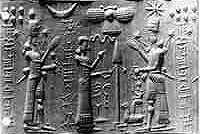
Then there is the reference to the 'morning star'. In Pyramid text there is a passage about the new Horus being the 'Morning Star, when Osiris says, 'The reed-floats of the sky are set in place for me, that I may cross by means of them to Ra' at the horizon,...I will stand among them, for the moon is my brother, the Morning Star is my offspring'. The morning star was a symbol of rebirth in the Essene Community and the Jerusalem church.[ Jesus' church ] Egyptian reference to this is given in pyramid texts numbers ;357, 929, 935, and 1707. The Egyptian hieroglyph for 'Morning Star means' - 'divine knowledge'. The star is a five pointed star in the hieroglyphic form and is the Star of David which is in the Masonic lodge. In the Masonic Lodge it symbolizes the five points of fellowship. The Morning star is the Venus rising star of rebirth. see .. The Rising Venus Star and Enoch
![]()
Seqenenre's Burial - Another body was found
The verse in Genesis. This was Jacob addressing Joseph on his death bed. The English interputation of this is, " you failed to obtain their secret", ( mine honour - my honor will be questioned ) "we have failed to do God's will and regain from the 'caretakers' that which is ours".( be not thou united)..with God ( in their self will, they digged ) ..,with anger and vengeance they killed a man thereby destroying the foundation of that which they were seeking most. Of course at this time ( 1554BC ) Jacob had no way of knowing Moses had done God's will. Again this matches with the time after Seqenenre's death.
Meanwhile, the substituted secrets of the initiation of a king which included the "living resurrection" and the significance of the building of a square and upright temple must have remained intact. These principals along with the Laws of God were brought with them on their journey out of bondage. The secrets remained in the royal line of David.
The man buried with Seqenenre; The Forensic Evidence
The description of the mummy of Seqenenre, found by Emil Brugsh in 1881 at Thebes is as follows; "The middle of his forehead was smashed in, Another blow had fractured his right eye socket,( the missing eye ) his right cheekbone and his nose. A third blow had been delivered behind his left ear, shattering the mastoid bone and ending in the first vertebra of the neck. Although in life he had clearly been a handsome young man with black, curly hair, the set expression on Seqenenre's face showed he died in agony."
A previous blow to the head [ the top gash ] was healing. Experts suggest there must have been brain damage caused by this blow because one arm of the mummy was contorted. How could a weakened man with brain damage fight? How could he ride in or drive a chariot and fight with only one usefull arm ? This combined with the Fact that the Queen was possibly killed at the same time [ she most likely had to help him get to the temple every day to say the prayers ] can be nothing but assassination. The Angle of the gashes [ the one behind the left ear ] confirm the King was on his knees.
"There was a putrid smell and the body was somewhat decomposed as when the body is left for some time without proper care and mummification."( since he had been buried by the ruffians, not found for at least two to three weeks, and then finally discovered by the Fellowcrafts, dug up and then mummified and buried properly.) The kings coffin was only described as "that befitting a king."
"As part of Jubelum's punishment, he had continually been dipped in sour milk and left in the desert heat naked. No incision marks, no organs removed. The smell gave him a distinct discription of the 'Evil One'. This was done so that the demons of darkness could find him. After his genitals had been cut off, he had been wrapped in mummification bandages while still alive and screaming. His hands covering the genital space in a cupped position." The bandages were soo tight he could not breathe, which was the point. "He died within minutes of being placed in the sealed coffin with his head forced back in an effort to breathe. He had pierced ears and good teeth, suggesting high birth. The coffin was white-painted cedar with no inscription, but is considered to be the coffin of a priest. Queen and wife of Seqenenre, Ahmose-Inhapi, was wrapped identically ( indicating the work was done by the same person )and the three were ....Jubelum below......dated by experts to the early eighteenth dynasty."
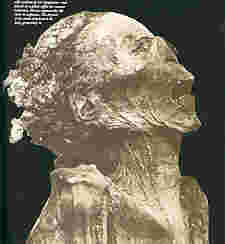 "Searching for information on all recorded mummies we were
immediately struck by the details of the very strange remains of
a young man who in life had been over five feet eight inches tall.
Photographs of the unwrapped mummy were conspicuous because
of the appearance of extreme agony on the face as well as the
details of the burial which were highly unusual. The body had
not been embalmed in that there was no incision and all the
internal organs were in place. Whilst the individual had
therefore not been mummified in the usual sense of the word, he
had been wrapped in the normal manner. Strangely no attempt had
been made to set the angle of the head or compose the facial
features and the initial effect is of a man issuing a long,
terrible scream. The arms are not at the side of the body nor
crossed on the chest in the usual manner but stretched downwards
with the cupped hands covering, yet not quite touching, the
pubic region. Beneath the hands lies a space where the genitals
should be. This man had been castrated. As the possibility of
coincidence evaporated, we knew with utter certainty
that we had not only found Hiram Abif, the legendary architect
of the Temple, but after three and a half thousand years we had
solved the circumstances of the killing and identified one of the murderers.'
"Searching for information on all recorded mummies we were
immediately struck by the details of the very strange remains of
a young man who in life had been over five feet eight inches tall.
Photographs of the unwrapped mummy were conspicuous because
of the appearance of extreme agony on the face as well as the
details of the burial which were highly unusual. The body had
not been embalmed in that there was no incision and all the
internal organs were in place. Whilst the individual had
therefore not been mummified in the usual sense of the word, he
had been wrapped in the normal manner. Strangely no attempt had
been made to set the angle of the head or compose the facial
features and the initial effect is of a man issuing a long,
terrible scream. The arms are not at the side of the body nor
crossed on the chest in the usual manner but stretched downwards
with the cupped hands covering, yet not quite touching, the
pubic region. Beneath the hands lies a space where the genitals
should be. This man had been castrated. As the possibility of
coincidence evaporated, we knew with utter certainty
that we had not only found Hiram Abif, the legendary architect
of the Temple, but after three and a half thousand years we had
solved the circumstances of the killing and identified one of the murderers.'
Christopher Knight and Robert Lomas, "The Hiram Key"
After the Master was murdered, the new King (Pharaoh) Kamose, Seqenenre's son, took the throne and began driving out of Egypt, all the Hyksos Kings and anyone associated with them. The common man, resident or land-owner( Canaanites and Hebrews )were forced into slavery.
Kamose ( kah-MOH-suh )declared a victory over the Hyksos saying, " When day broke, I pounced on the foe like a falcon; at breakfast time I attacked him. I broke down his walls. I slew his people, I captured his women. My soldiers were as lions with the spoils of the enemy; slaves, flocks, fat, and honey. They shared out their property with merry heart." Kamose's successors drove the Hyksos completely out of Egypt and persued them across the Sinai Penninsula into Palestine. ( World History ,classroom addition, by Dr. Loyd Swenson Professor of History, University of Houston 1994 )
There were no longer Kings of Egypt, and the "Secrets of king making" were lost forever. The substituted secrets could not make a true King, so only 'Pharaohs' were brought to power. No one could ever again be a true King and have the absolute right to rule. The word Pharaoh means 'great house'. This word recombined the two lands of Egypt once again, but the 'Real Word' was Lost.
Confirming Military Records
Kamose's Campaigns.
Toward the end of the Seventeenth Dynasty, conflict broke out between
Upper Egypt and the Hyksos and their vassals, during which the
Theban king, Seqenenre Tao, was killed. He was succeeded by his
son , Kamose in ca. 1554 BC. Kamose's ambitions, which are
recorded on the two so-called Kamose Stelae, were more than
merely to avenge the death of his predecessor. His self-declared
personal repugnance at sharing Egypt with an Asiatic and a
Nubian led him to begin a new war against them to effect the
unification of Egypt under his authority. Clearly by including
the Kushites, he was considering Lower Nubia
to be a part of greater Egypt.
By his Year 3, he began military operations against his two enemies, targeting the Kushites first for tactical reasons. His troops advanced through Nubia to Toshka and Arminna, leaving graffiti with his name. Similarly, scarab-seals with his name were found at Faras. By this campaign, Kamose reoccupied the Middle Kingdom fort at Buhen and drove the Kushites south of there.
The subsequent violent capture of Buhen by the Kerma- Kushites and their occupation of the other forts marked the first clear instance of direct military intervention by the Kushites into Lower Nubia, where previously, Egyptian residents served as their intermediaries and vassals. Bourriau argues that this new development constituted a clear threat to the kings at Thebes. The Thebans would have to resecure these forts and protect their rear before proceeding against the Hyksos with any plans they might have.
Afterward, in his campaign against the Hyksos and their vassals, Kamose made effective use of Medjay-troops in his army, as indicated in the Kamose Stelae. In the same text, he recorded intercepting a letter from the Hyksos king to the ruler of Kush proposing a military alliance against the Thebans. The content and tenor of the letter indicate a very friendly relationship between the Hyksos and Kushites, as well as confirm Kamose's previous capture of territory from the latter. Thereafter, Kamose died unexpectedly (he was hastily buried in a converted commoner's coffin) and was succeeded by Ahmose, his brother/mother in ca.- 1550 BC.
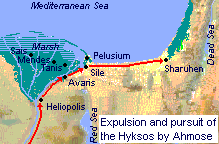 After an eleven year hiatus,( which had much to do with
Moses.
Ahmose conquered the Hyksos, expelled them from Egypt and
annihilated them in southern Palestine. In doing so, he
established the Eighteenth Dynasty and the Egyptian
New Kingdom. Then, with his northern border secure, he
turned southward to the reconquest and reoccupation of Nubia.
Ahmose set his battle-hardened troops upon the task of
eliminating the state of Kush in southern Lower Nubia. Kushite
harmony in Lower Nubia and her previous friendship
with the Hyksos made her an obvious threat to Egyptian
security, and Egypt would not tolerate a potential enemy in the
Nile Basin. In three military campaigns, Ahmose ousted the state of
Kush from Lower Nubia, resecured the Egyptian frontier at Semna,
put down lingering insurrection, and he drove any remaining
resistance southward above the Third Cataract. He built a new
temple at Buhen north of the fort, as well as, perhaps,
on the Island of Sai, south of the Second Cataract. He also
bagan to consolidate Egyptian authority and administration in
Nubia.
After an eleven year hiatus,( which had much to do with
Moses.
Ahmose conquered the Hyksos, expelled them from Egypt and
annihilated them in southern Palestine. In doing so, he
established the Eighteenth Dynasty and the Egyptian
New Kingdom. Then, with his northern border secure, he
turned southward to the reconquest and reoccupation of Nubia.
Ahmose set his battle-hardened troops upon the task of
eliminating the state of Kush in southern Lower Nubia. Kushite
harmony in Lower Nubia and her previous friendship
with the Hyksos made her an obvious threat to Egyptian
security, and Egypt would not tolerate a potential enemy in the
Nile Basin. In three military campaigns, Ahmose ousted the state of
Kush from Lower Nubia, resecured the Egyptian frontier at Semna,
put down lingering insurrection, and he drove any remaining
resistance southward above the Third Cataract. He built a new
temple at Buhen north of the fort, as well as, perhaps,
on the Island of Sai, south of the Second Cataract. He also
bagan to consolidate Egyptian authority and administration in
Nubia.
There arose out of the chaos a new beginning for Egypt and they reclaimed their lands and resurrected their spirit. The elders had quickly prepared new 'substituted secrets 'and that kept the spirit of MA'AT in place.
Ahmose; He speaks as follows. I grew up in the town of Nekheb, my father being a soldier of the King of Upper and Lower Egypt, Sekenenre, the justified. Baba son of Reinet was his name. (Urk IV 2,8 - 2,16)
Our search Engine does not search for the links in this site, only words in the text.
Exerpts taken from ..
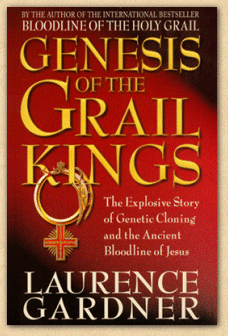 |
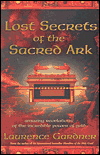 |
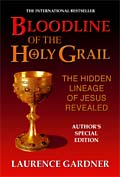 |
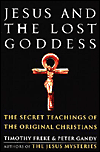 |
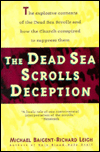 |
 |
NO PART OF THIS SITE MAY BE COPIED OR REPRODUCED, IN WHOLE OR IN PART, WITHOUT THE EXPRESS WRITTEN PERMISSION OF THE WEBMASTER...© COPYRIGHT 1999 - 2009 c.i.c. ALL RIGHTS RESERVED.
Please, If your site is not Masonic in nature, We kindly ask that you do not link to this site without permission of the Web Master or under the guidelines set forth here... Legal Issues